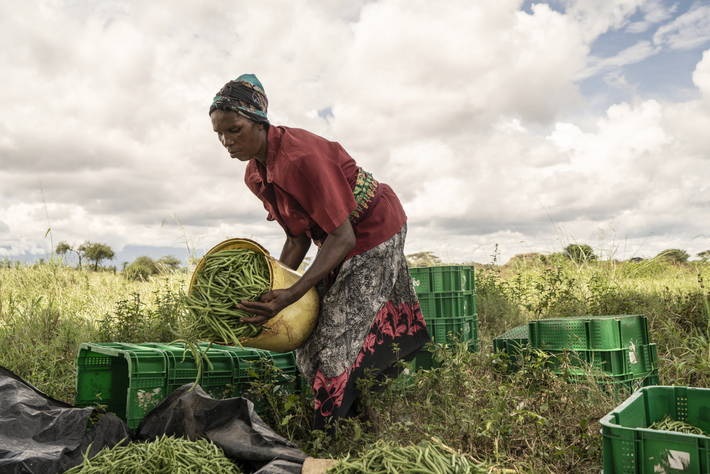Agriculture is a vital part of our society, providing food and resources for billions of people around the world. However, with climate change and other external factors affecting crop growth and production, ensuring that we have reliable systems in place to store harvested crops has become more crucial than ever.
Effective agricultural storage goes beyond simply keeping crops safe from pests and spoilage. It involves strategic planning, careful maintenance, and proper use of technology to ensure that the harvest is preserved in the best possible condition.
In this blog post, we will discuss some strategies for effective agricultural storage that can help farmers and other stakeholders secure their harvests for a sustainable future.
Understanding the Importance of Agricultural Storage
Before delving into specific strategies, it is essential to understand why agricultural storage is crucial. Here are some of the key reasons:
- Ensures Food Security: Without proper storage, a significant portion of the harvest can be lost due to pests, spoilage, or other external factors. This can lead to food shortages and insecurity in communities that rely on agriculture for sustenance.
- Prevents Financial Losses: Farmers invest a significant amount of time, labor, and money in growing crops. Without proper storage, these investments can go to waste due to spoilage or damage during transport.
- Enables Better Market Access: With effective agricultural storage, farmers can store their produce until the market demand and prices are favorable. This allows them to sell their harvests at higher prices, increasing their income and improving their livelihoods.
Strategies for Effective Agricultural Storage
Now that we understand the importance of agricultural storage let’s explore some strategies to secure our harvests:
1. Proper Infrastructure Planning
To ensure effective agricultural storage, building an appropriate storage facility is of utmost importance. The location, size, and design of the storage yard should be carefully considered based on factors such as the type of crop, climate conditions, and storage duration. Aspects such as moisture and temperature levels become crucial for crops that are sensitive to fluctuations and require insulated structures with proper ventilation.
However, root vegetables such as potatoes and carrots may be stored in cool underground cellars. When designing an agricultural storage facility, it is essential to plan for easy loading and unloading, pest control measures, and fire safety precautions. By factoring in these considerations, the storage yard becomes efficient and effective, ensuring long-term preservation and an adequate supply of harvests.
2. Regular Maintenance and Inspection
Regular maintenance is key to ensuring that agricultural storage facilities are in good condition. This includes proper cleaning, repairing any damages, and checking for potential issues such as cracks or leaks that may compromise the integrity of the structure.
Furthermore, regular inspections can help identify and address any pest infestations, spoilage, or other issues before they become significant problems. This can save time and money in the long run and ensure that stored crops remain safe for consumption.
3. Effective Pest Control Measures
Pests are a significant threat to agricultural storage, as they can quickly infest and destroy large quantities of crops. Insecticides, fumigants, and traps are commonly used to control pests, but they can be harmful to both humans and the environment.
Therefore, it is crucial to adopt integrated pest management techniques that combine various methods such as crop rotation, proper sanitation, and biological controls to reduce reliance on chemical pesticides.
4. Use of Modern Technologies
Advancements in technology have made agricultural storage more efficient and effective. For instance, controlled atmosphere storage uses a combination of low oxygen and high carbon dioxide levels to preserve crops for longer periods.
Similarly, vacuum cooling can rapidly remove field heat from produce, extending its shelf life. Other technologies such as moisture sensors, temperature monitors, and automated ventilation systems can also aid in proper crop storage.
5. Training and Education
Lastly, it is essential to provide farmers and other stakeholders with proper training and education on effective agricultural storage practices. This includes educating them on the importance of crop rotation, proper harvesting techniques, and how to use technology for better storage results.
Moreover, workshops and demonstrations can help disseminate knowledge about pest control measures, maintenance methods, and other best practices that can improve agricultural storage outcomes.
In Conclusion
Effective agricultural storage is vital for food security, economic stability, and sustainable development. By implementing proper infrastructure planning, regular maintenance and inspection, effective pest control measures, use of modern technologies, and providing training and education to stakeholders, we can secure our harvests for a better future.
Let us all work towards implementing these strategies and ensuring that the fruits of our labor are protected for generations to come. So, remember to prioritize effective agricultural storage for a more sustainable world.

